Chaoyang Zhao
Foundation Model Research Center, Institute of Automation, Chinese Academy of Sciences, objecteye.Inc
GenPilot: A Multi-Agent System for Test-Time Prompt Optimization in Image Generation
Oct 08, 2025Abstract:Text-to-image synthesis has made remarkable progress, yet accurately interpreting complex and lengthy prompts remains challenging, often resulting in semantic inconsistencies and missing details. Existing solutions, such as fine-tuning, are model-specific and require training, while prior automatic prompt optimization (APO) approaches typically lack systematic error analysis and refinement strategies, resulting in limited reliability and effectiveness. Meanwhile, test-time scaling methods operate on fixed prompts and on noise or sample numbers, limiting their interpretability and adaptability. To solve these, we introduce a flexible and efficient test-time prompt optimization strategy that operates directly on the input text. We propose a plug-and-play multi-agent system called GenPilot, integrating error analysis, clustering-based adaptive exploration, fine-grained verification, and a memory module for iterative optimization. Our approach is model-agnostic, interpretable, and well-suited for handling long and complex prompts. Simultaneously, we summarize the common patterns of errors and the refinement strategy, offering more experience and encouraging further exploration. Experiments on DPG-bench and Geneval with improvements of up to 16.9% and 5.7% demonstrate the strong capability of our methods in enhancing the text and image consistency and structural coherence of generated images, revealing the effectiveness of our test-time prompt optimization strategy. The code is available at https://github.com/27yw/GenPilot.
PhysVLM: Enabling Visual Language Models to Understand Robotic Physical Reachability
Mar 13, 2025Abstract:Understanding the environment and a robot's physical reachability is crucial for task execution. While state-of-the-art vision-language models (VLMs) excel in environmental perception, they often generate inaccurate or impractical responses in embodied visual reasoning tasks due to a lack of understanding of robotic physical reachability. To address this issue, we propose a unified representation of physical reachability across diverse robots, i.e., Space-Physical Reachability Map (S-P Map), and PhysVLM, a vision-language model that integrates this reachability information into visual reasoning. Specifically, the S-P Map abstracts a robot's physical reachability into a generalized spatial representation, independent of specific robot configurations, allowing the model to focus on reachability features rather than robot-specific parameters. Subsequently, PhysVLM extends traditional VLM architectures by incorporating an additional feature encoder to process the S-P Map, enabling the model to reason about physical reachability without compromising its general vision-language capabilities. To train and evaluate PhysVLM, we constructed a large-scale multi-robot dataset, Phys100K, and a challenging benchmark, EQA-phys, which includes tasks for six different robots in both simulated and real-world environments. Experimental results demonstrate that PhysVLM outperforms existing models, achieving a 14\% improvement over GPT-4o on EQA-phys and surpassing advanced embodied VLMs such as RoboMamba and SpatialVLM on the RoboVQA-val and OpenEQA benchmarks. Additionally, the S-P Map shows strong compatibility with various VLMs, and its integration into GPT-4o-mini yields a 7.1\% performance improvement.
LightPlanner: Unleashing the Reasoning Capabilities of Lightweight Large Language Models in Task Planning
Mar 11, 2025Abstract:In recent years, lightweight large language models (LLMs) have garnered significant attention in the robotics field due to their low computational resource requirements and suitability for edge deployment. However, in task planning -- particularly for complex tasks that involve dynamic semantic logic reasoning -- lightweight LLMs have underperformed. To address this limitation, we propose a novel task planner, LightPlanner, which enhances the performance of lightweight LLMs in complex task planning by fully leveraging their reasoning capabilities. Unlike conventional planners that use fixed skill templates, LightPlanner controls robot actions via parameterized function calls, dynamically generating parameter values. This approach allows for fine-grained skill control and improves task planning success rates in complex scenarios. Furthermore, we introduce hierarchical deep reasoning. Before generating each action decision step, LightPlanner thoroughly considers three levels: action execution (feedback verification), semantic parsing (goal consistency verification), and parameter generation (parameter validity verification). This ensures the correctness of subsequent action controls. Additionally, we incorporate a memory module to store historical actions, thereby reducing context length and enhancing planning efficiency for long-term tasks. We train the LightPlanner-1.5B model on our LightPlan-40k dataset, which comprises 40,000 action controls across tasks with 2 to 13 action steps. Experiments demonstrate that our model achieves the highest task success rate despite having the smallest number of parameters. In tasks involving spatial semantic reasoning, the success rate exceeds that of ReAct by 14.9 percent. Moreover, we demonstrate LightPlanner's potential to operate on edge devices.
Mitigating Hallucination in Visual Language Models with Visual Supervision
Nov 27, 2023



Abstract:Large vision-language models (LVLMs) suffer from hallucination a lot, generating responses that apparently contradict to the image content occasionally. The key problem lies in its weak ability to comprehend detailed content in a multi-modal context, which can be mainly attributed to two factors in training data and loss function. The vision instruction dataset primarily focuses on global description, and the auto-regressive loss function favors text modeling rather than image understanding. In this paper, we bring more detailed vision annotations and more discriminative vision models to facilitate the training of LVLMs, so that they can generate more precise responses without encounter hallucination. On one hand, we generate image-text pairs with detailed relationship annotations in panoptic scene graph dataset (PSG). These conversations pay more attention on detailed facts in the image, encouraging the model to answer questions based on multi-modal contexts. On the other hand, we integrate SAM and mask prediction loss as auxiliary supervision, forcing the LVLMs to have the capacity to identify context-related objects, so that they can generate more accurate responses, mitigating hallucination. Moreover, to provide a deeper evaluation on the hallucination in LVLMs, we propose a new benchmark, RAH-Bench. It divides vision hallucination into three different types that contradicts the image with wrong categories, attributes or relations, and introduces False Positive Rate as detailed sub-metric for each type. In this benchmark, our approach demonstrates an +8.4% enhancement compared to original LLaVA and achieves widespread performance improvements across other models.
ZBS: Zero-shot Background Subtraction via Instance-level Background Modeling and Foreground Selection
Mar 26, 2023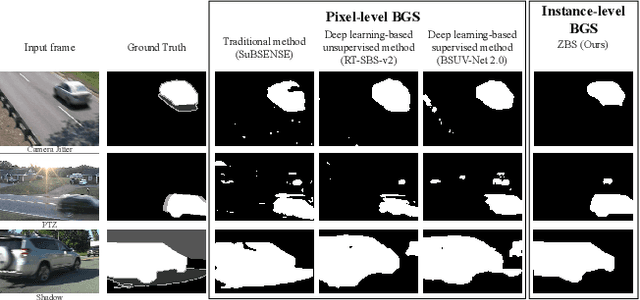
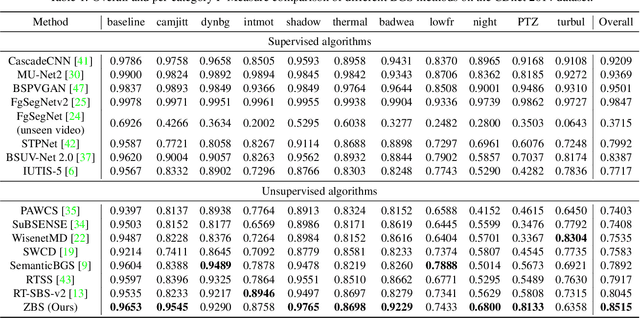
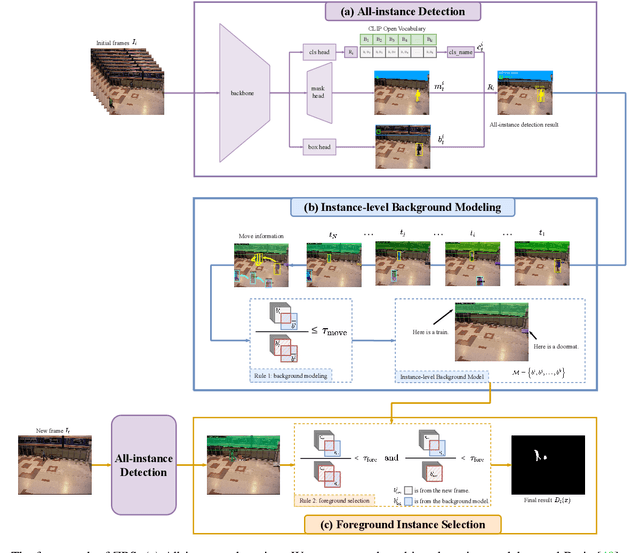
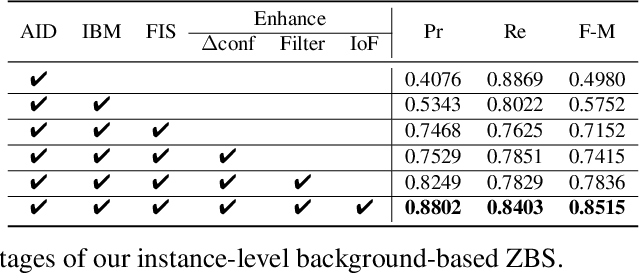
Abstract:Background subtraction (BGS) aims to extract all moving objects in the video frames to obtain binary foreground segmentation masks. Deep learning has been widely used in this field. Compared with supervised-based BGS methods, unsupervised methods have better generalization. However, previous unsupervised deep learning BGS algorithms perform poorly in sophisticated scenarios such as shadows or night lights, and they cannot detect objects outside the pre-defined categories. In this work, we propose an unsupervised BGS algorithm based on zero-shot object detection called Zero-shot Background Subtraction (ZBS). The proposed method fully utilizes the advantages of zero-shot object detection to build the open-vocabulary instance-level background model. Based on it, the foreground can be effectively extracted by comparing the detection results of new frames with the background model. ZBS performs well for sophisticated scenarios, and it has rich and extensible categories. Furthermore, our method can easily generalize to other tasks, such as abandoned object detection in unseen environments. We experimentally show that ZBS surpasses state-of-the-art unsupervised BGS methods by 4.70% F-Measure on the CDnet 2014 dataset. The code is released at https://github.com/CASIA-IVA-Lab/ZBS.
Efficient Masked Autoencoders with Self-Consistency
Feb 28, 2023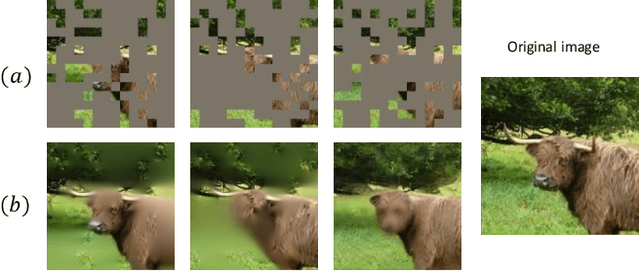
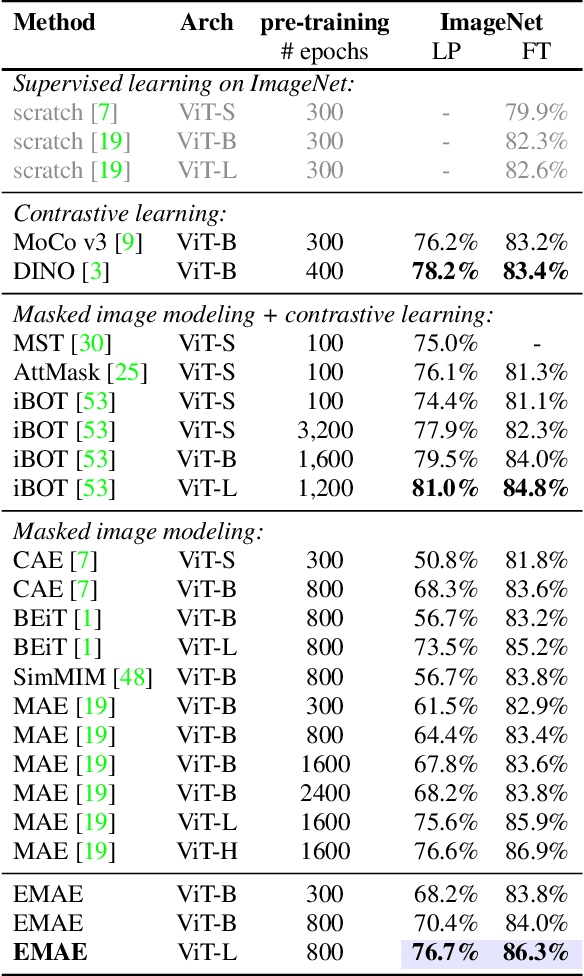
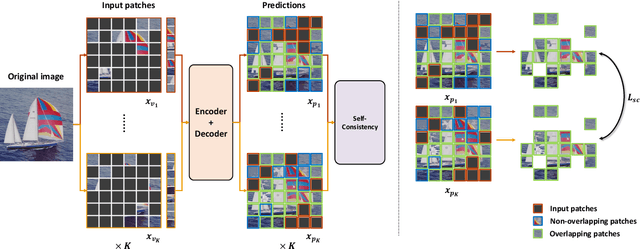

Abstract:Inspired by masked language modeling (MLM) in natural language processing, masked image modeling (MIM) has been recognized as a strong and popular self-supervised pre-training method in computer vision. However, its high random mask ratio would result in two serious problems: 1) the data are not efficiently exploited, which brings inefficient pre-training (\eg, 1600 epochs for MAE $vs.$ 300 epochs for the supervised), and 2) the high uncertainty and inconsistency of the pre-trained model, \ie, the prediction of the same patch may be inconsistent under different mask rounds. To tackle these problems, we propose efficient masked autoencoders with self-consistency (EMAE), to improve the pre-training efficiency and increase the consistency of MIM. In particular, we progressively divide the image into K non-overlapping parts, each of which is generated by a random mask and has the same mask ratio. Then the MIM task is conducted parallelly on all parts in an iteration and generates predictions. Besides, we design a self-consistency module to further maintain the consistency of predictions of overlapping masked patches among parts. Overall, the proposed method is able to exploit the data more efficiently and obtains reliable representations. Experiments on ImageNet show that EMAE achieves even higher results with only 300 pre-training epochs under ViT-Base than MAE (1600 epochs). EMAE also consistently obtains state-of-the-art transfer performance on various downstream tasks, like object detection, and semantic segmentation.
Obj2Seq: Formatting Objects as Sequences with Class Prompt for Visual Tasks
Sep 28, 2022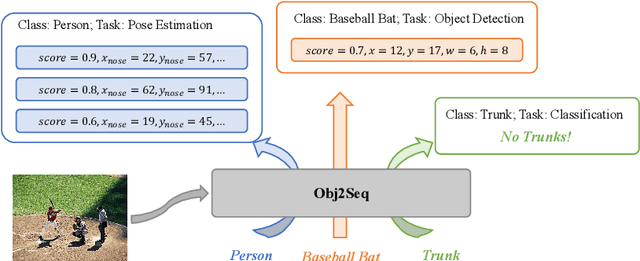
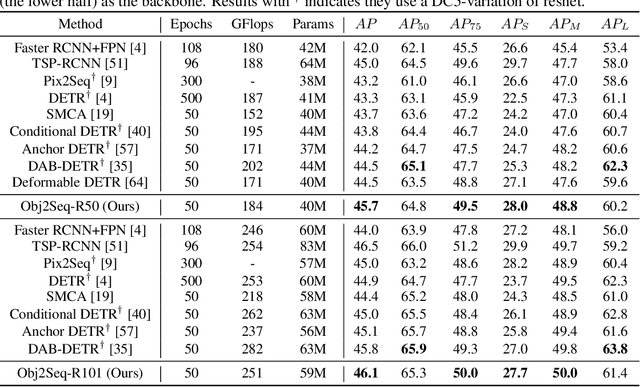
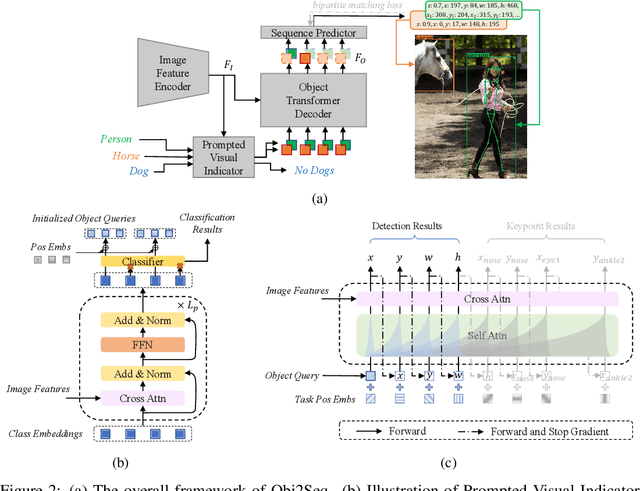
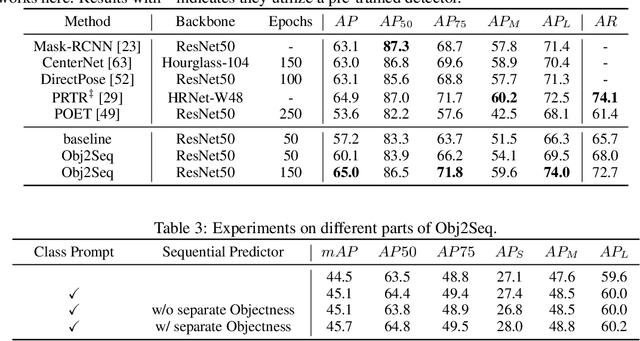
Abstract:Visual tasks vary a lot in their output formats and concerned contents, therefore it is hard to process them with an identical structure. One main obstacle lies in the high-dimensional outputs in object-level visual tasks. In this paper, we propose an object-centric vision framework, Obj2Seq. Obj2Seq takes objects as basic units, and regards most object-level visual tasks as sequence generation problems of objects. Therefore, these visual tasks can be decoupled into two steps. First recognize objects of given categories, and then generate a sequence for each of these objects. The definition of the output sequences varies for different tasks, and the model is supervised by matching these sequences with ground-truth targets. Obj2Seq is able to flexibly determine input categories to satisfy customized requirements, and be easily extended to different visual tasks. When experimenting on MS COCO, Obj2Seq achieves 45.7% AP on object detection, 89.0% AP on multi-label classification and 65.0% AP on human pose estimation. These results demonstrate its potential to be generally applied to different visual tasks. Code has been made available at: https://github.com/CASIA-IVA-Lab/Obj2Seq.
Transfering Low-Frequency Features for Domain Adaptation
Aug 31, 2022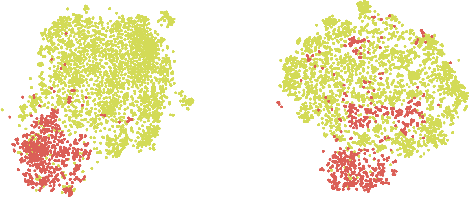


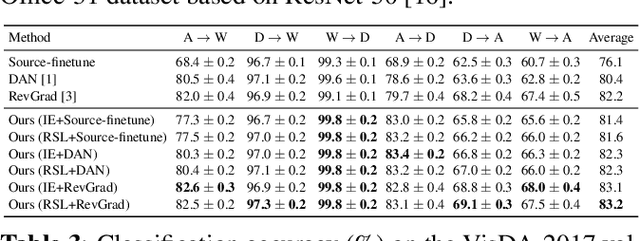
Abstract:Previous unsupervised domain adaptation methods did not handle the cross-domain problem from the perspective of frequency for computer vision. The images or feature maps of different domains can be decomposed into the low-frequency component and high-frequency component. This paper proposes the assumption that low-frequency information is more domain-invariant while the high-frequency information contains domain-related information. Hence, we introduce an approach, named low-frequency module (LFM), to extract domain-invariant feature representations. The LFM is constructed with the digital Gaussian low-pass filter. Our method is easy to implement and introduces no extra hyperparameter. We design two effective ways to utilize the LFM for domain adaptation, and our method is complementary to other existing methods and formulated as a plug-and-play unit that can be combined with these methods. Experimental results demonstrate that our LFM outperforms state-of-the-art methods for various computer vision tasks, including image classification and object detection.
UniVIP: A Unified Framework for Self-Supervised Visual Pre-training
Mar 14, 2022Abstract:Self-supervised learning (SSL) holds promise in leveraging large amounts of unlabeled data. However, the success of popular SSL methods has limited on single-centric-object images like those in ImageNet and ignores the correlation among the scene and instances, as well as the semantic difference of instances in the scene. To address the above problems, we propose a Unified Self-supervised Visual Pre-training (UniVIP), a novel self-supervised framework to learn versatile visual representations on either single-centric-object or non-iconic dataset. The framework takes into account the representation learning at three levels: 1) the similarity of scene-scene, 2) the correlation of scene-instance, 3) the discrimination of instance-instance. During the learning, we adopt the optimal transport algorithm to automatically measure the discrimination of instances. Massive experiments show that UniVIP pre-trained on non-iconic COCO achieves state-of-the-art transfer performance on a variety of downstream tasks, such as image classification, semi-supervised learning, object detection and segmentation. Furthermore, our method can also exploit single-centric-object dataset such as ImageNet and outperforms BYOL by 2.5% with the same pre-training epochs in linear probing, and surpass current self-supervised object detection methods on COCO dataset, demonstrating its universality and potential.
Pruning-aware Sparse Regularization for Network Pruning
Jan 18, 2022Abstract:Structural neural network pruning aims to remove the redundant channels in the deep convolutional neural networks (CNNs) by pruning the filters of less importance to the final output accuracy. To reduce the degradation of performance after pruning, many methods utilize the loss with sparse regularization to produce structured sparsity. In this paper, we analyze these sparsity-training-based methods and find that the regularization of unpruned channels is unnecessary. Moreover, it restricts the network's capacity, which leads to under-fitting. To solve this problem, we propose a novel pruning method, named MaskSparsity, with pruning-aware sparse regularization. MaskSparsity imposes the fine-grained sparse regularization on the specific filters selected by a pruning mask, rather than all the filters of the model. Before the fine-grained sparse regularization of MaskSparity, we can use many methods to get the pruning mask, such as running the global sparse regularization. MaskSparsity achieves 63.03%-FLOPs reduction on ResNet-110 by removing 60.34% of the parameters, with no top-1 accuracy loss on CIFAR-10. On ILSVRC-2012, MaskSparsity reduces more than 51.07% FLOPs on ResNet-50, with only a loss of 0.76% in the top-1 accuracy. The code is released at https://github.com/CASIA-IVA-Lab/MaskSparsity. Moreover, we have integrated the code of MaskSparity into a PyTorch pruning toolkit, EasyPruner, at https://gitee.com/casia_iva_engineer/easypruner.
 Add to Chrome
Add to Chrome Add to Firefox
Add to Firefox Add to Edge
Add to Edge